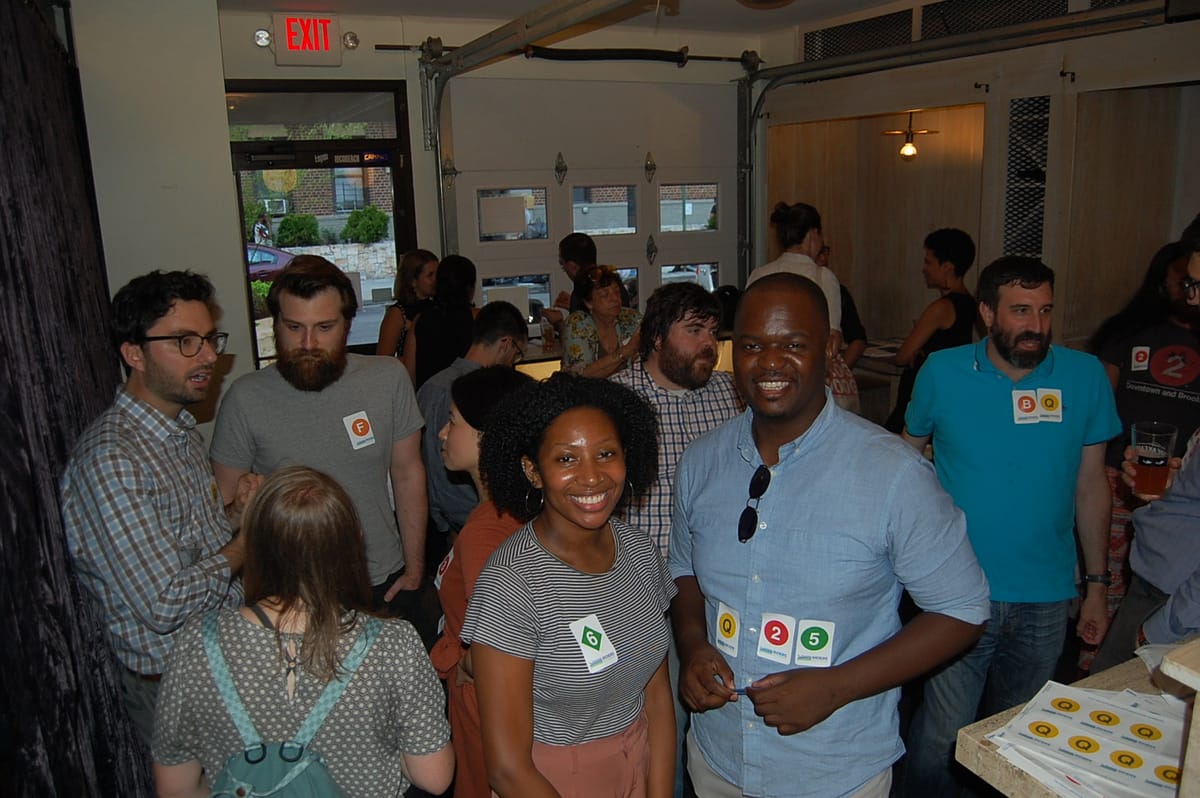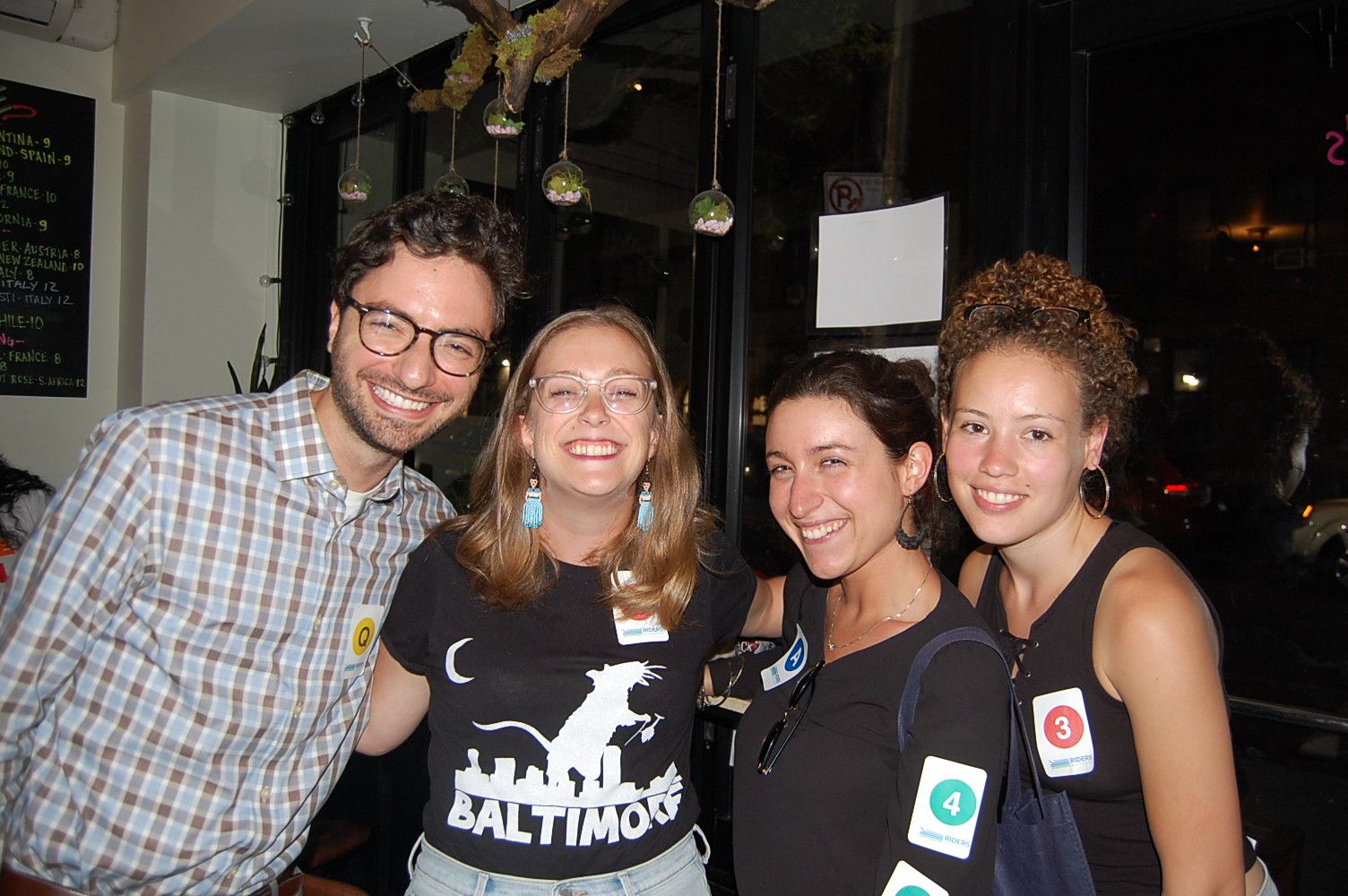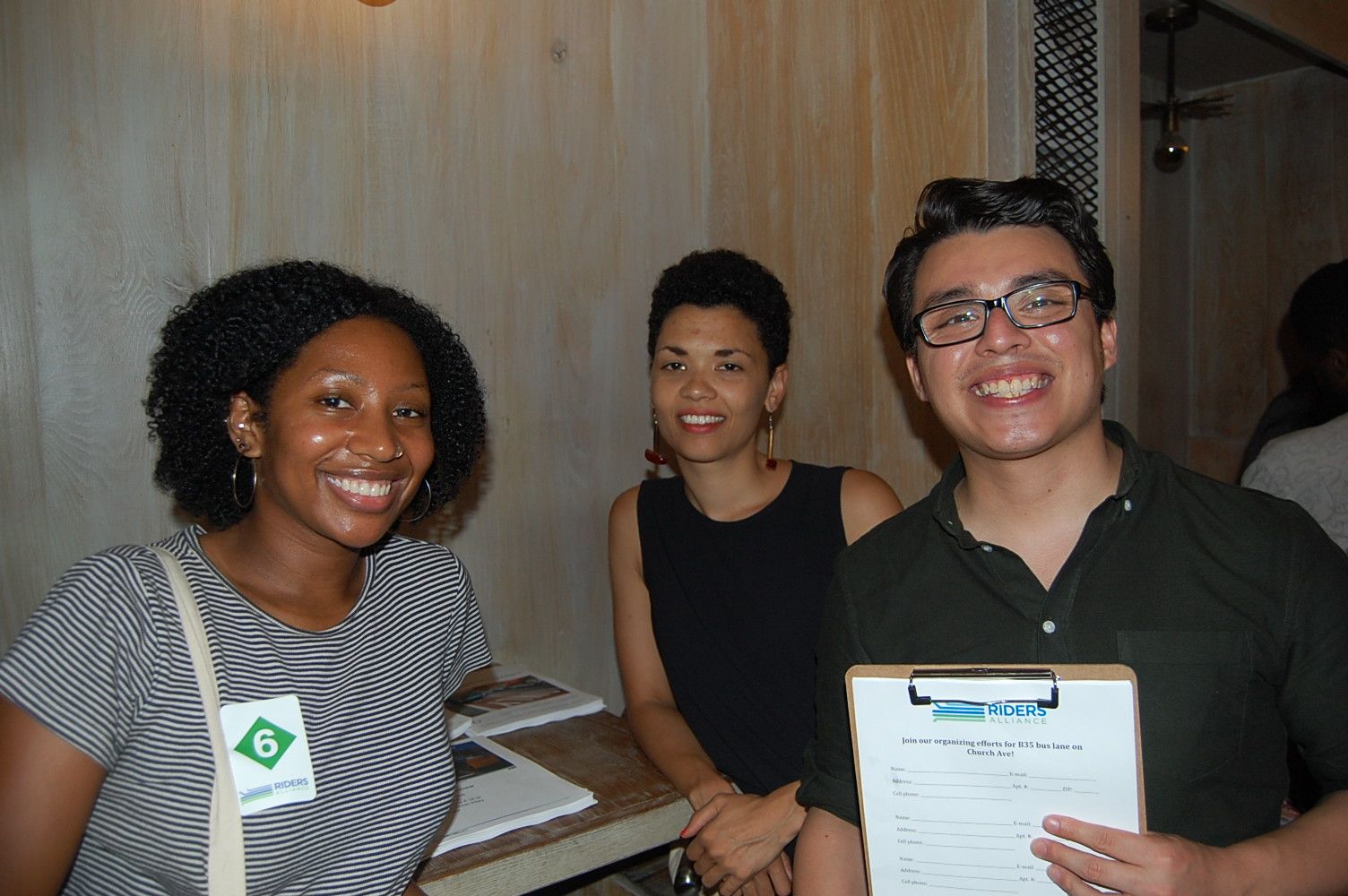Subway Riders Coming Together Across the Park

PROSPECT-LEFFERTS GARDENS – New York’s transit infrastructure has been under ever-increasing strain—last Friday and again this Monday, trains were stalled for hours during peak rush hour. Riders were stuck on trains in the midst of the summer’s hottest heatwave. This failure comes off the heels of several high profile pedestrian deaths in Flatbush. Community and advocacy groups have sensed that the state of affairs must change.

Recently at Erv’s, a local bar in Prospect-Lefferts Gardens, Democratic District Leader Josue Pierre and Flatbush resident and subway rider Billy Richling hosted “Happy Hour For Better Public Transit,” which sought to connect riders on all sides of Prospect Park. A fun element of this social event had participants wear stickers to identify their subway line.
“New York’s transportation problems are our city’s problems. Imagine you’re a working father in Flatbush. If we fix our transportation system, you would be able to access more, better-paying jobs. Your commute is shorter, so you can spend more time with your child, a key indicator of intellectual development. There are also people who would live in the suburbs if guaranteed a 35-minute commute, which would reduce housing prices,” said District Leader Pierre.
Richling then hit us with some stats. “Every day there are 5.5 million rides on the subway system and 2.5 million on busses. No other city in New York or the U.S. relies upon public transportation as much as we do; we should be the most powerful constituency in Albany bar none. Yet, we have the longest commute of any metro area in the country, and the nation’s slowest bus system. The MTA recently announced that for the first time since 2013, trains ran at 80% of the time from a low of 53%, January of last year. So you are only late for work once a week,” Richling joked.
While this is a welcome improvement for many New Yorkers, Chicago’s CTA regularly posts on-time rates of over 95%. Hong Kong, Tai Pai, and Berlin boast 99% on-time rates. Additionally, despite our city’s growing population and booming economy, transit ridership is declining. In the last three years, ridership has dropped 5% since 2012, bus ridership has dropped 15%. Commuters shifting to cars don’t only threaten the MTA’s primary funding stream, potentially leading to more massive system failures like last Friday’s, it also places New Yorkers in danger.
This year, gun violence has claimed the lives of 61 New Yorkers, but traffic fatalities have killed 111. “Two of those deaths happened in the last two weeks on Church Avenue. For me, fighting for better public transportation is fighting for our common New York values,” said Richling.

Samaya Abdus-Salaam represented Riders Alliance, a transit advocacy organization, at the event. “Where Riders Alliance comes in,” explained Samaad, “is that we organize subway and bus riders. We get them to come out to strategy meetings and build a powerful unified voice to hold our public officials accountable.”
Abdus-Salaam discussed the organization’s three campaigns with attendees. First, they want to ensure that the estimated one trillion dollars from congestion pricing is actually allocated to the MTA, as promised. Second, they want to increase access to half-price Metrocards for people living below the poverty line. Finally, Riders Alliance wants to strengthen our bus system by increasing access to alternate boarding and designating additional dedicated bus lanes. While these plans may seem costly, they could generate money in the long-run by restoring trust in the MTA and increasing ridership.

“Ultimately our membership drives our campaigns,” she said. “We want to hear from you about what you want.”
Participants each shared stories of their own. “They have not changed the bus system in between the Brooklyn Museum, the Botanical Gardens, and Grand Army Plaza since the huge influx of weekend visitors,” said attendee Sue Ann Yellen. “It’s hell for drivers, for bikers, and for pedestrians. The MTA refuses to make any changes to schedules. We have been talking about it for years.” The glacial pace of change is a common complaint from New Yorkers.
District Leader Pierre reminded us: “Community Boards 9, 14 and 17 each have a transportation committee, which allows them to more effectively advocate for their constituents. There are not unlimited resources. The squeaky wheel gets the grease. Continual advocacy is crucial if we want to get our city moving.”




